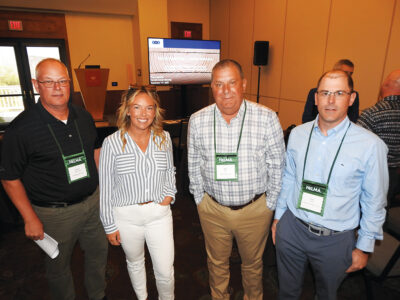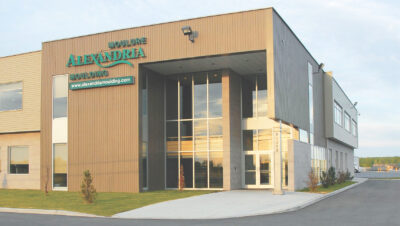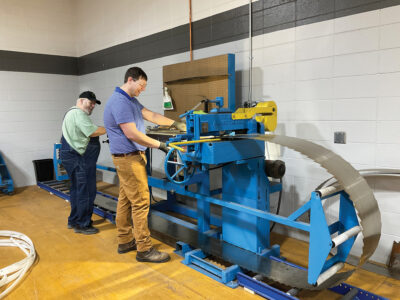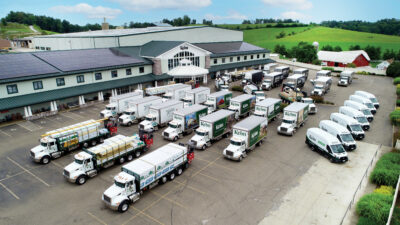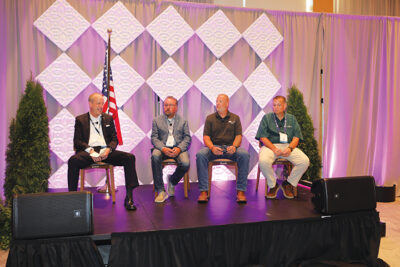
The end of 2024 brought an unusual slight uptick in pricing in tandem with the usual seasonal dip in demand. Post U.S. election and heading into much harsher winter conditions for most of North America, West Coast producers have a bevy of concerns they can only speculate on the best way to address. At the time of this writing several B.C. mills are in the process of curtailing production: will that bring balance and firmer pricing to the marketplace? The following is what a few West Coast producers had to say.
Dean Garofano of Delta Forestry Group, Pitt Meadows, BC, said, “Most of our U.S. customers are looking at their recent election results as very favorable for business. There appears to be general optimism that 2025 will be a better year for construction and remodeling, leading to an increase in lumber demand. Although this is welcome news for manufacturers after a lackluster 2024, log supply issues in coastal B.C. will likely still be a factor. Typical fall log volumes were down, and consequently will impact log inventories for Spring of 2025.”
Garofano continued, “Delta Forestry Group managed to increase our sales volume in both Cedar and Hemlock in 2024, despite a tight log supply market and hope to continue that growth. However, this may be challenging with log supply and duty issues. AR6 results will be out in January and then go into effect in summer of 2025. It is widely anticipated that the AR6 results will once again be double the existing rate. Estimates are coming in the 30 percent range, not including any additional tariffs that President-elect Trump has threatened. Should these AR6 predictions be accurate, there will be a lot of spring demand for logs and lumber as manufacturers and distributors try to secure their needs before the new rates become effective.”
Garofano finished with this: “As summer approaches, I suspect all involved will take a much more cautious approach in preparation for the transition to the new duty rate and subsequent price increases. Our industry has had to demonstrate resilience in the past and will once again need to rise to the challenges of 2025.”
John McDowell of Oregon Industrial Lumber Products, Springfield, OR, said, “In regard to Doug Fir VG Clears- everything 6” and wider is extremely tight still. Demand for this material is only average but the amount available is less than what we and others in this market can move. On the 5” and narrower, demand and supply seem to be pretty close. Two other obstacles are making the market slightly difficult. One is prices are still on the rise at the mill level. Second, true fine grain material is extremely tight in all sizes due to lack of material coming down from Canada caused by the old growth mandate/lack of cutting, mills being both behind (mainly due to repairs, update projects, and a few Covid shutdowns), and the pricing of material from up north (higher tariffs and lack of material being the main cause). We are seeing lots of material that would show up at our door already at the price of what we are struggling to sell the finished product at.”
McDowell continued, “Customers are cautious right now, they seem to be moving wood and doing ok but not wanting to buy any more material than what is immediately needed due to high pricing and interest rates. At the Reman level, overhead costs are still a big challenge as parts and maintenance are still very high compared to 2023. Same with Interest rates making it more costly to carry large inventories.”
McDowell said, “It was my opinion that the election would not interfere or cause any real issues in the lumber industry regardless of outcome. I think now that people know the outcome, they are more willing to begin to make decisions and act with a known outcome to plan for. The one caveat to this is if Trump being elected creates an opportunity for the Softwood Tariffs to increase on the U.S. side going forward. It is my opinion that this is mainly driven by U.S. Timber landowners and that while our currently high tariffs are good for them it is not good for the rest of the industry and the U.S. people in general. To raise the tariffs even more without some type of monetary limit for special or specific products would be detrimental to the U.S. lumber industry.”
On the topic of Yellow Cedar, McDowell said, “Most of the material for this species comes to the U.S. market by way of Canada. Therefore, the Old Growth Mandate and the high tariffs make this material difficult for entry for many U.S. companies. The current demand is relatively close with material available. The one exception being that YC Clears were slower than usual this year. I expect that 2025 will be a good year for YC and OILP but it always depends on the early winter/spring weather in the Northeast. There is more material available currently to the U.S. market than there is demand. But if we can continue to grow the interest and knowledge about the products available there is supply to back growing markets. However, YC tends not to be processed at the saw level in large quantities during the first quarter so if a supplier is looking to have material available in the early months of 2025, they should be looking ahead and lining up material now for the months ahead. Those who are regular players in the YC market know to be securing material for the first quarter.”
Parm Binning of Jazz Forest Products, Abbotsford, BC, said, “Prices for Western Red Cedar and Western Commodities are inching up since the elections. There is a huge shortage of fiber/logs in BC right now, everyone is fighting for the same pile of wood. Our customers are still saying business is slow, but things are picking up. They have been talking about buying for Q1 now, but because it is the end of the year, everyone is watching their inventory levels carefully. Getting into winter/snow for BC, logging will be shutting down all around especially higher elevation logging. Trump is saying he will increase tariffs/ duties for all Canadian products to 25 percent. The duty is already at 14.5 percent and customers are complaining about it. Prices should be going up again in January if the duty goes up to 25 percent, the end product will adjust for itself in the end.”



